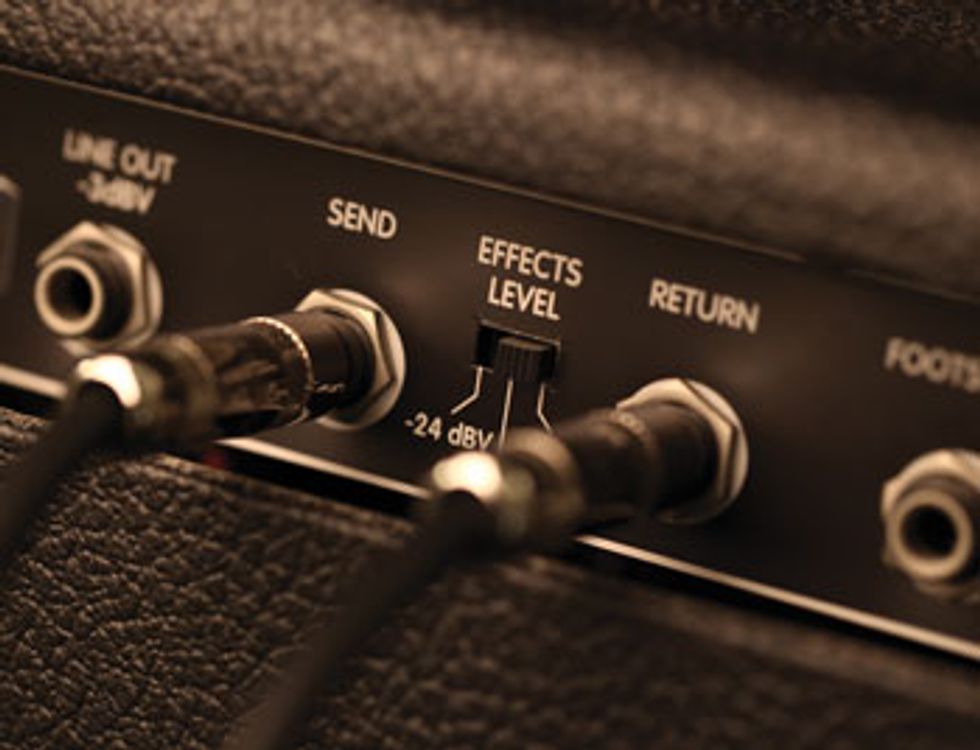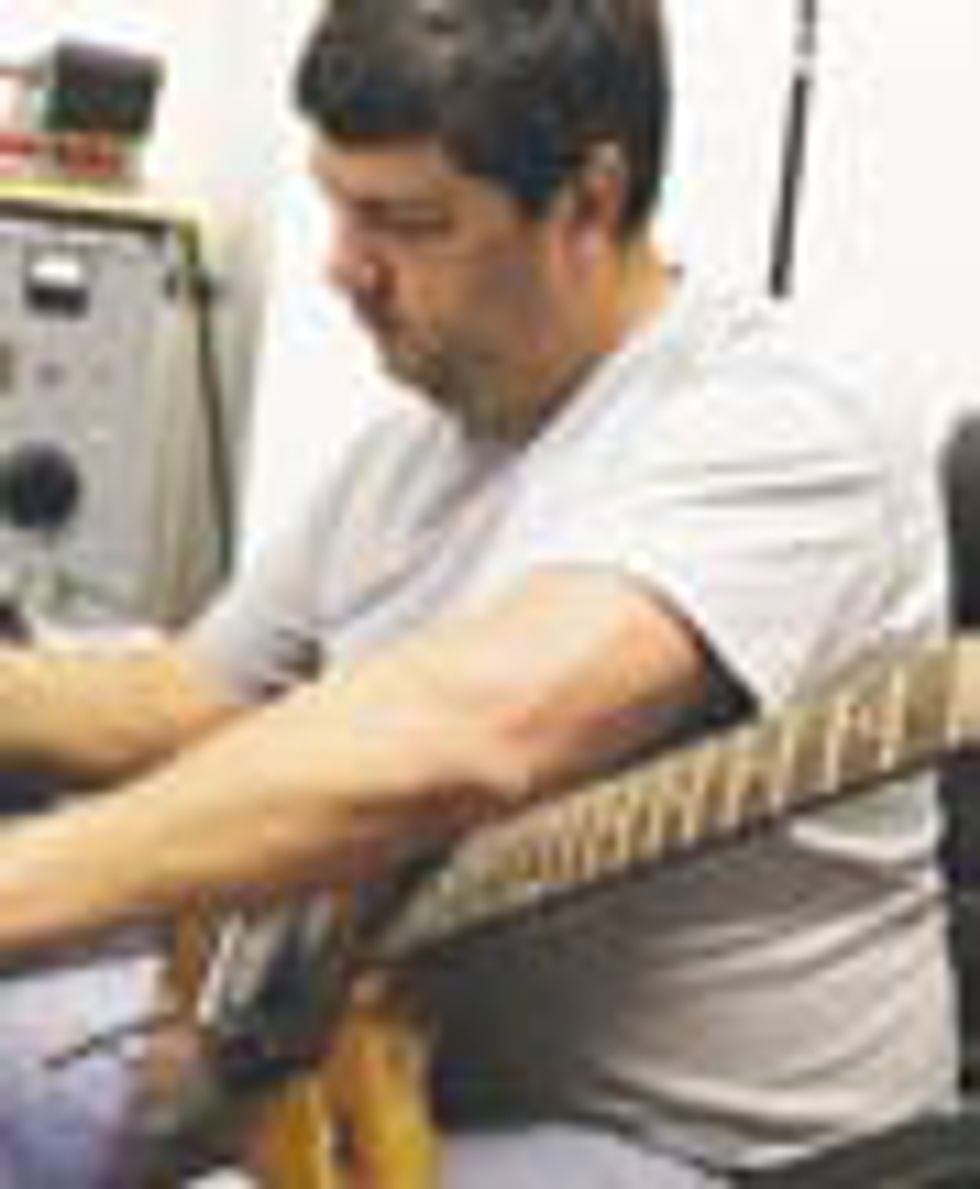
Some effects loops let you attenuate the signal level heading to the input of the effects device.
Effects loops: What are they and why would I want one? Back in the day, I went down to the local music store and bought an Echoplex tape delay, plugged it into my amp, and had a lot of fun. (Ironically, I also dreamed of the day when technology would bring us the “perfect delay”—one without warble and with perfect copies of the input signal. Live and learn.)
After a while, I noticed that something wasn’t quite what I was looking for, and it didn’t have to do with the recording limitations of the tape. I was using a decent amount of distortion in my tube amp and as the repeats trailed away, they got cleaner. In nature, echoes are copies of the original, and they get quieter and darker, but never less distorted. A trip down to my local amp-mod guy yielded an effects loop, version I. The idea was that you plug straight into the amp, and then break the signal chain after the preamp but before the power amp section, thus creating a loop in which you can insert effects. Using this loop, the input signal to the Echoplex now contained preamp distortion and the repeats didn’t clean up as they decayed.
Problem 1 solved.
On to problem 2. In general terms, the internal voltage levels in effects are 1V to 2V; in tube amps, they’re 100V to 200V. In order not to “smoke” the input stage of the Echoplex, the signal from the preamp stage of the tube amp needs to be attenuated by about a factor of 10 (20 dB). But now when the signal goes back in to the power amp, we have lost 20 dB of gain and can’t drive the amp to full volume.
Okay, back to the amp guy for more mods and effects loop, version II. The first mod is a send level control so we can adjust the amount of attenuation of the tube preamp stage to match the expected level of the effects input stage. The second mod is a return level control and an additional tube to add back the gain we lost sending the signal out. The biggest problem with effects loops is getting these two different animals to play nice with each other—and to do that we need someone in the middle.
So far we can see that the advantages of an effects loop are that we get to use the tube amp’s preamp distortion and plug the guitar straight in to the amp. But the level matching can be problematic without send and return level controls. Short of hacking up the insides of the amp, what can you do if you have an effects loop with no send and return controls? There are companies that sell level shifters that are basically transformers in a box, and these devices provide a fixed gain or attenuation of the signal. Unlike electronics, there is no defined input and output with these level-shifting boxes.
The loop we have been considering so far is a series loop. At the time I got my amp modded, parallel loops, if in existence, were not well known. In a series loop, the dry signal goes out and is mixed with the wet signal within the effect. In a parallel loop, the dry signal stays in the amp and the effect’s mix control is set to 100 percent wet. Now we can control the effect amount with the loop’s return level and thus preserve the dry path.
Some delay effects have an effects loop. A loop in a delay effect is not the same as what we have been describing here. The simplest of delays would record the input signal and play it back some time later. This would give you one repeat. I used to do this with a 3-head cassette deck. If we take the output of the delay and send it back to the input we will get more repeats—this is the feedback loop of the delay. (This control is labeled feedback on some delays and repeats on others.) Increasing the level of the feedback signal increases the number of repeats. If we break the loop, we can insert effects that will only act on the repeats. For example, if we insert an overdrive, the repeats will get distorted each time they pass through the loop. Or a low-pass filter will make the repeats successively darker.
What about an effect loop for a looper? That’s a topic for another day. Happy looping.
 Gregg Stock
is Senior Analog Guru
and Engineer at Strymon.
Gregg Stock
is Senior Analog Guru
and Engineer at Strymon.









![Rig Rundown: Russian Circles’ Mike Sullivan [2025]](https://www.premierguitar.com/media-library/youtube.jpg?id=62303631&width=1245&height=700&quality=70&coordinates=0%2C0%2C0%2C0)














